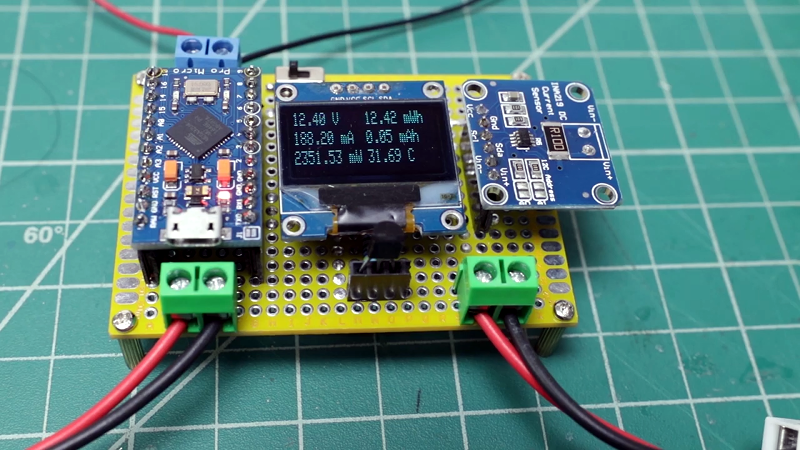If you are dealing with solar or battery power, you might want to have one of these little energy meters built by [Open Green Energy] around. The Arduino-based instrument measures DC voltage, current, power, energy, capacity, and temperature. The range is only up to 26 volts and 3.2 amps, but you could extend that with some external circuitry.
Of course, measuring a voltage with the Arduino is old hat. But the addition of a INA219 current sensor provides voltage, current, and power measurements in a single module that talks I2C back to the host computer.
The layout is neat although he’s working on a PCB, as well. This basic circuit would work well for a data logger or current monitor with just a few software changes.
If you are into this sort of thing, the INA219 actually comes in two versions. The “A” version is not as precise as the “B” version. The difference, though, is small. According to the data sheet, the “A” version can be off as much as 1% on current measurement across the entire temperature range, while the “B” variant holds to 0.5%. Both devices are typically around 0.2% under normal operating conditions.
The device works with an external shunt resistor, so it measures the supply voltage on one side of the shunt and by observing the difference in voltage on the other side, it can calculate the amount of current.
If you want to see what an $8,000 instrument can do for current measurement, have a look at the Keithley 2460 SourceMeter. If your budget is somewhat less, there’s the Joulescope.
















I got excited when I saw the heading (yes! A project to versatile measure 240V and maybe a useful number of amps) but instead was a small trivial project using a INA219. Must have been a slow news day for HAD.
Oh they must be waiting for you to submit your better project > https://hackaday.com/submit-a-tip/
Now why would he be excited if he had a better project? Clearly he was excited because he thought it would be a useful post he could learn something from.
But then how would he complain about it?
You can easily swap out the sensor for a ACS758 ACS758KCB-050B (after the dash is the current, also available in 100, 150 and 200A)
Adjust the firmware accordingly and you are done :)
https://github.com/openenergymonitor
I think I have seen very similar devices ready made on ALiexpress – where he probably got the parts. :-)
the fun is in the making, with making comes learning, understanding, open source adds sharing, extending. Compare it with a toy car, most of us would prefer to build one from lego, mecano or whatever instead of having one from the toyshop.
This sounds like what you’re after. I plan on buying one for myself soon.
https://www.crowdsupply.com/circuitsetup/split-single-phase-energy-meter
Methinks someone, yet again, needs to understand how to calculate error budget and measurement uncertainty. The resolution indicated has no meaning, and the accuracy is indeterminate.